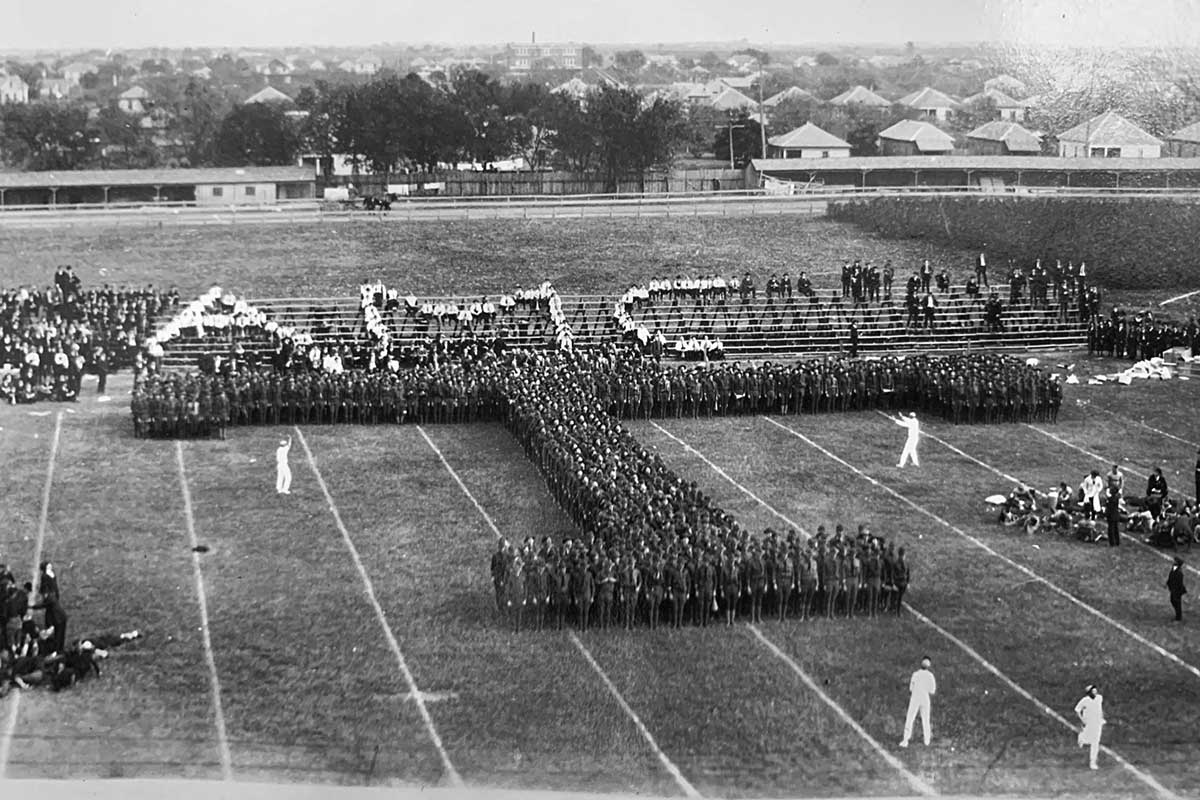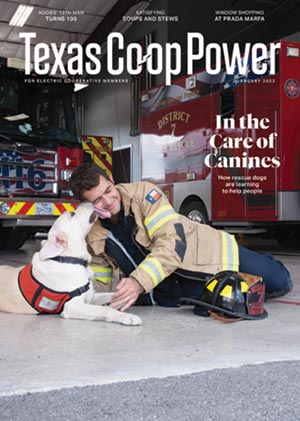There are long shots—and then there are long shots. On January 2, 1922, at the inaugural Dixie Classic bowl game in Dallas, few fans thought the Texas A&M University football team had even a sliver of a chance at victory. The Aggies’ opponents, after all, were the top-ranked Praying Colonels from Centre College in Danville, Kentucky. Centre included three All-Americans and had just knocked previously unbeaten Harvard out of the No. 1 national ranking.
The outlook was grim for the Aggies. “We were absolutely the unmitigated underdog,” says author and historian John Adams, a member of A&M’s class of 1973. “The papers all had A&M losing 40 to nothing, 30 to nothing, 20 to nothing.”
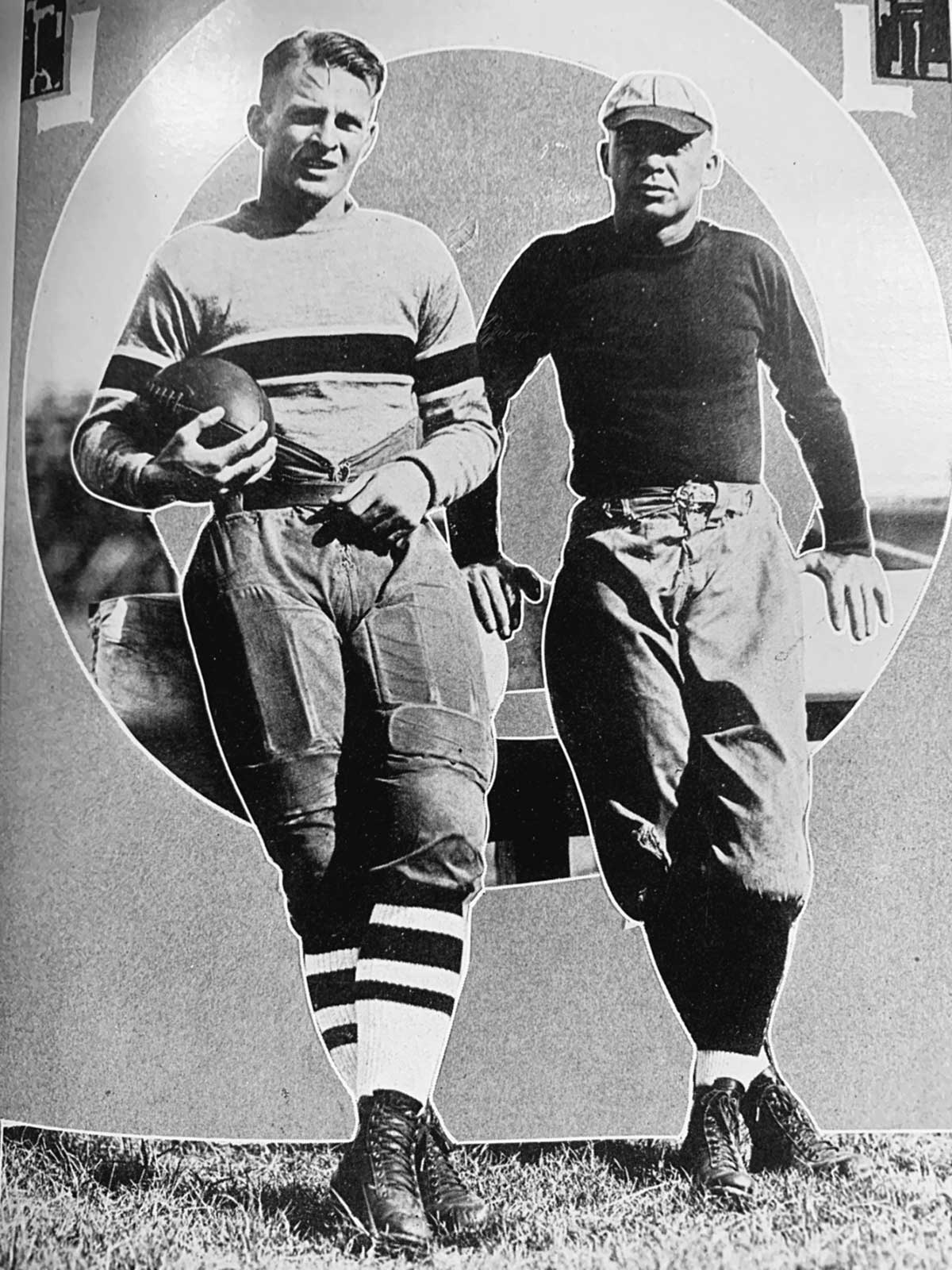
Aggies captain Heine Weir, left, whose injury paved the way for the 12th Man, with coach Dana X. Bible.
Cushing Memorial Library | Courtesy TAMU Press
Then came the bumps, bruises and fractures. A&M’s captain and quarterback, Heine Weir, broke his leg on the third play of the game, and that started a domino effect of injuries, including at least one concussion. “At that time—and I think it’s still a rule—if you can’t have 11 players out there, you have to forfeit the game,” says Adams, a Bluebonnet Electric Cooperative member. “So it’s getting close to halftime, and they have 11 players, but they’ve got five of them that are injured.”
What happens next is the stuff of legend and the beginning of one of Texas A&M’s most revered traditions. With things looking bleak, Aggies coach Dana X. Bible remembered a kid named E. King Gill, class of 1924.
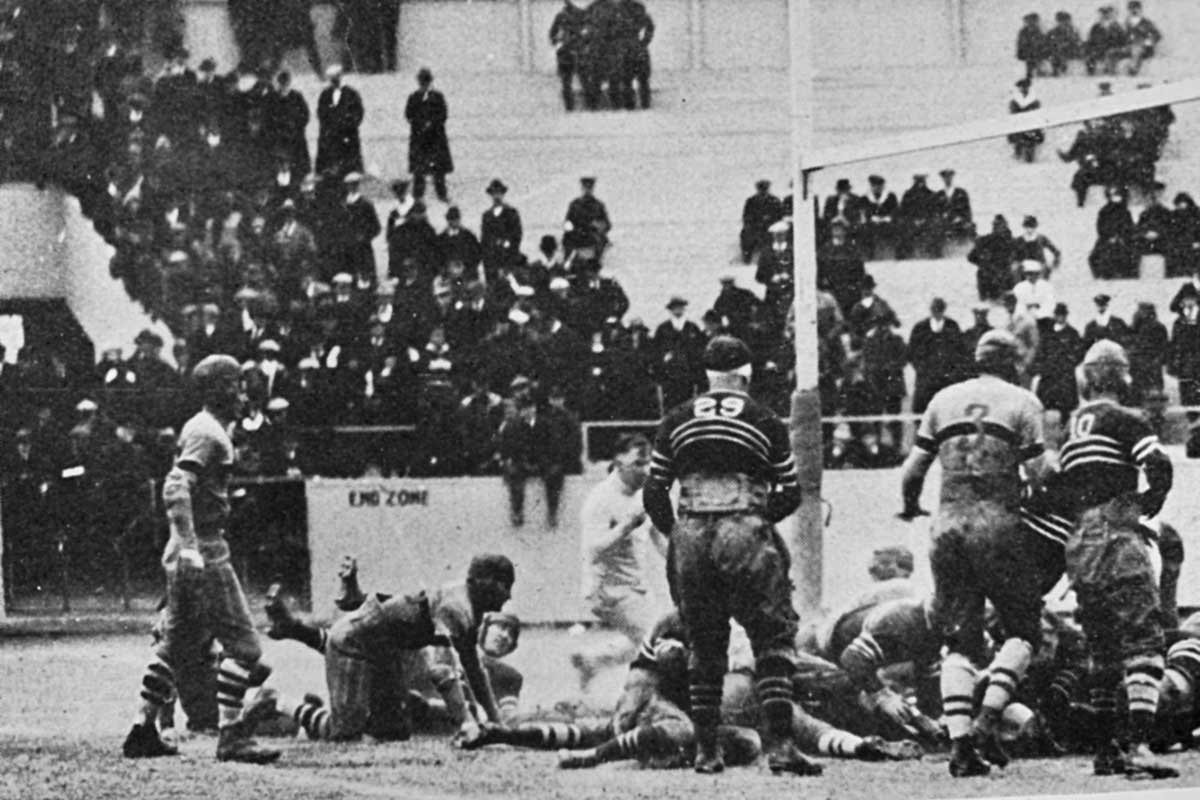
The Aggies make a goal-line stand in the 1922 Dixie Classic.
Cushing Memorial Library | Courtesy TAMU Press
Though Gill was a member of the football team, he wasn’t part of the squad traveling to the bowl game. He did, however, hitchhike from College Station to Dallas to see his buddies play at Fair Park, and he was up in the press box helping Waco sports writer Jinx Turner identify players on the field. But as the number of injured players quickly swelled, Bible had other ideas for the unsuspecting sophomore.
“All of a sudden, the coach turns and looks at the press box and waves at Gill,” Adams says. “So he comes out of the press box during halftime, goes under the stands—there’s no dressing room—and changes clothes with Heine Weir, the guy who broke his leg, and puts on his uniform. Gill comes out and stands on the sideline ready to go play. And then, little did they know, there is the beginning of the 12th Man.”
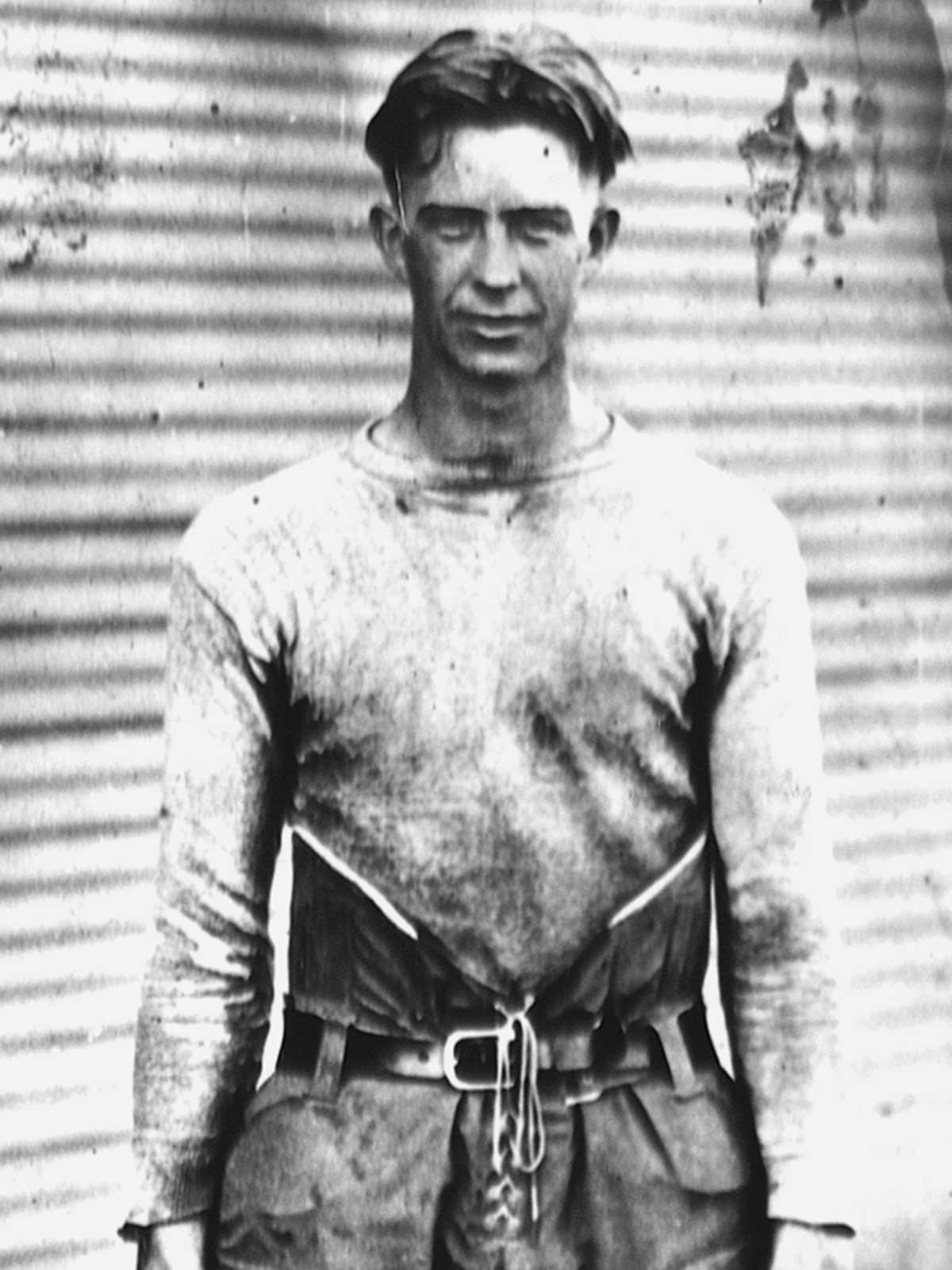
E. King Gill, the original 12th Man.
Cushing Memorial Library | Courtesy TAMU Press
In Adams’ newest book—Standing Ready: The Golden Era of Texas Aggie Football and the Beginning of the 12th Man Tradition, published in December by Texas A&M University Press—he recounts the tale of the history-making bowl game, which was replaced by the Cotton Bowl Classic. Along with historical photos and little-known details from the game, Standing Ready features interviews with most of the major figures involved in the 1922 outing, including the bowl game’s founder, Joe Utay, class of 1908 and captain of the 1907 A&M football team, as well as Gill himself. “I spent five years working on this book, but I’ve been interviewing these guys for over 40 years,” Adams says. He interviewed Utay and Gill in the mid-1970s, before Gill died in 1976 and Utay in 1977.
One hundred years later, in honor of Gill and his willingness to stand up for his team, the A&M student section stands for the entirety of every football and basketball game. And what a student section it is. At every home game at Kyle Field, an average of 38,000 students decked out in maroon and white stand ready, cheering for their team and waving white flags emblazoned with “12th Man.” A&M set an NCAA record for largest student section attendance in 2014 when 40,032 students watched the Aggies play Ole Miss.
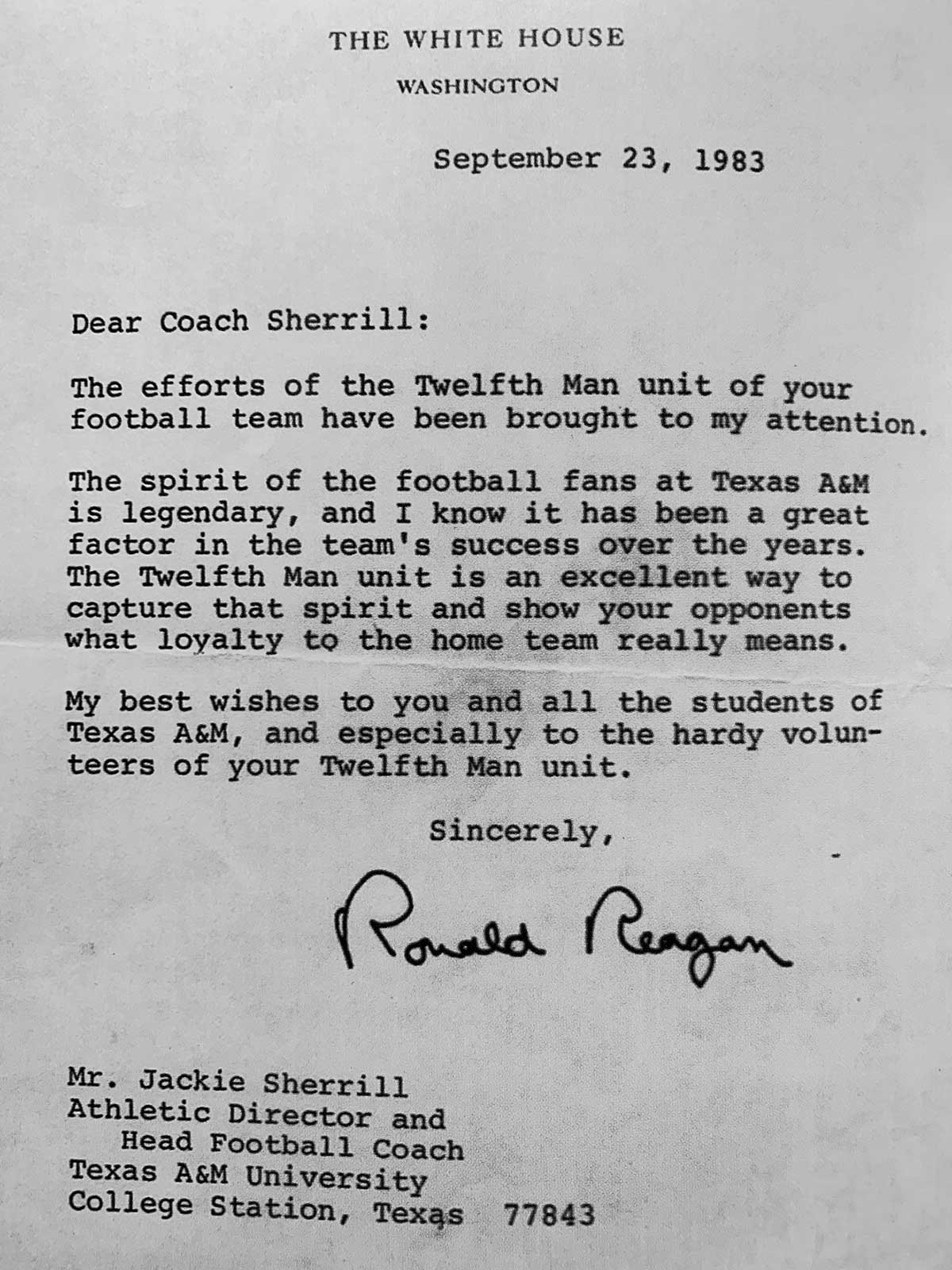
A letter from President Ronald Reagan to coach Jackie Sherrill recognizes the 12th Man.
Cushing Memorial Library | Courtesy TAMU Press
Annie McGinnis, class of 2017 and director of communications at Tri-County Electric Cooperative, has attended A&M football games since she was a child. “I was born on Thanksgiving Day, so rumor has it I watched the first Aggie game with my dad the day I was born,” she says. Her father, David McGinnis, class of 1990 and general manager and CEO at Grayson-Collin Electric Cooperative, confirms the tale. “She came at lunchtime, like 11-ish in the morning,” David McGinnis says. “We played TCU that year, and she and I watched that game while Mom slept, sitting in the hospital.”
Annie McGinnis describes the A&M student section as having a “spirit that pretty much engulfs you” and says that any potential discomfort from standing for four hours is no issue for Aggie fans. “There’s so much adrenaline and camaraderie amongst the students who are standing with the 12th Man that you don’t even think about your feet hurting because you’re standing on wobbly bleachers,” she says.
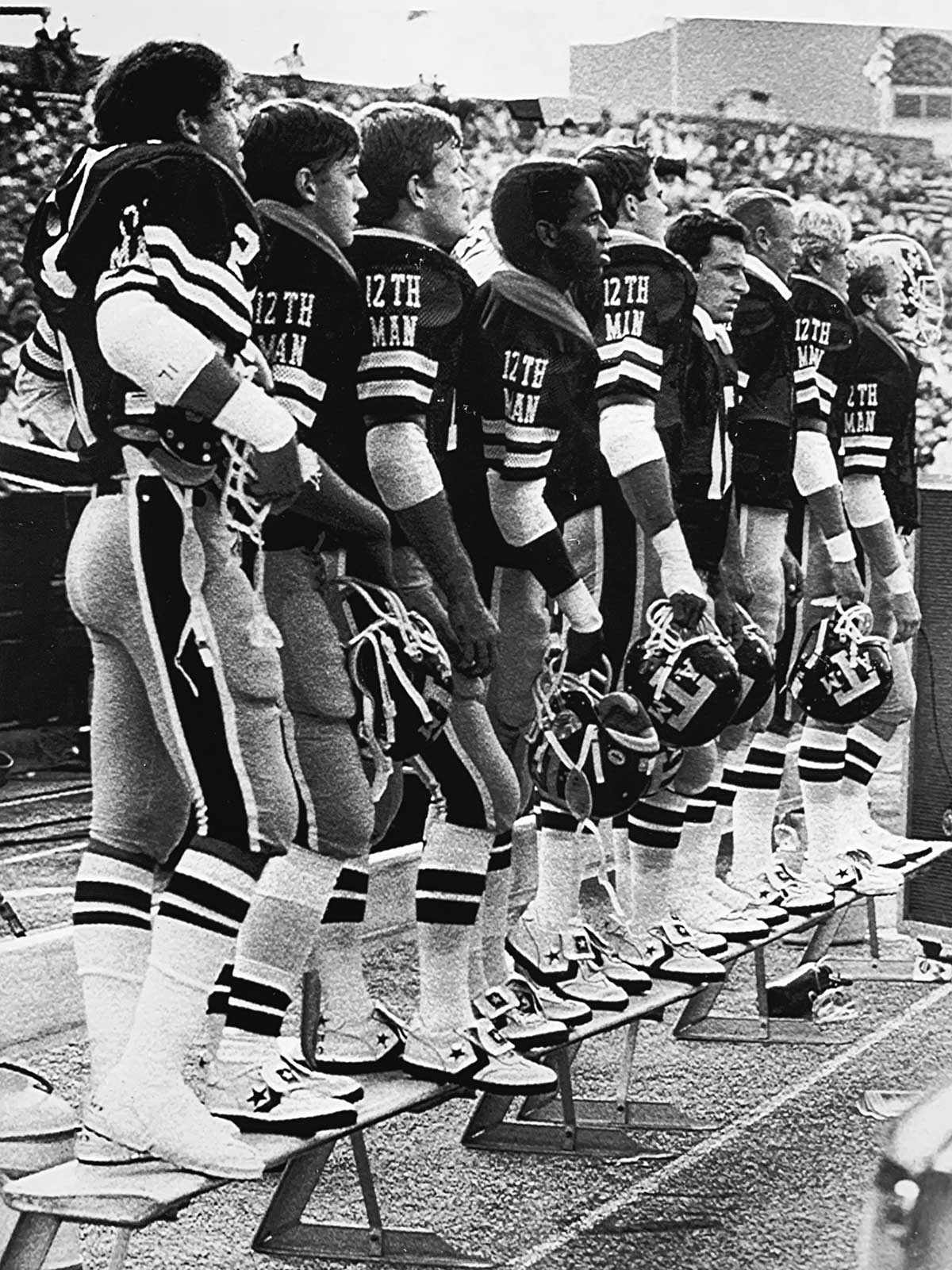
Members of the 12th Man on the sidelines in the 1980s.
Cushing Memorial Library | Courtesy TAMU Press
Cameron Smallwood, class of 1996 and CEO and general manager at United Cooperative Services, attended games as a student and has held season tickets for football and basketball games for many years since. “It’s like being part of a big family there cheering on the team,” he says. He likens the student spirit at A&M—and that eagerness to pitch in when needed—to working with an electric cooperative. “It’s a job with purpose,” he says, “so it fits our training pretty well.”
Like the McGinnises and Smallwood—and so many students before and after them—Gill never had to go on the field that winter day in 1922. The team didn’t need him to play after all. In fact, the banged-up country boys from College Station went on to win 22-14, accomplishing one of the biggest upsets college football has ever seen. The game made newspapers nationwide and, by Adams’ estimation, put Texas football—and Texas sports in general—on the map.
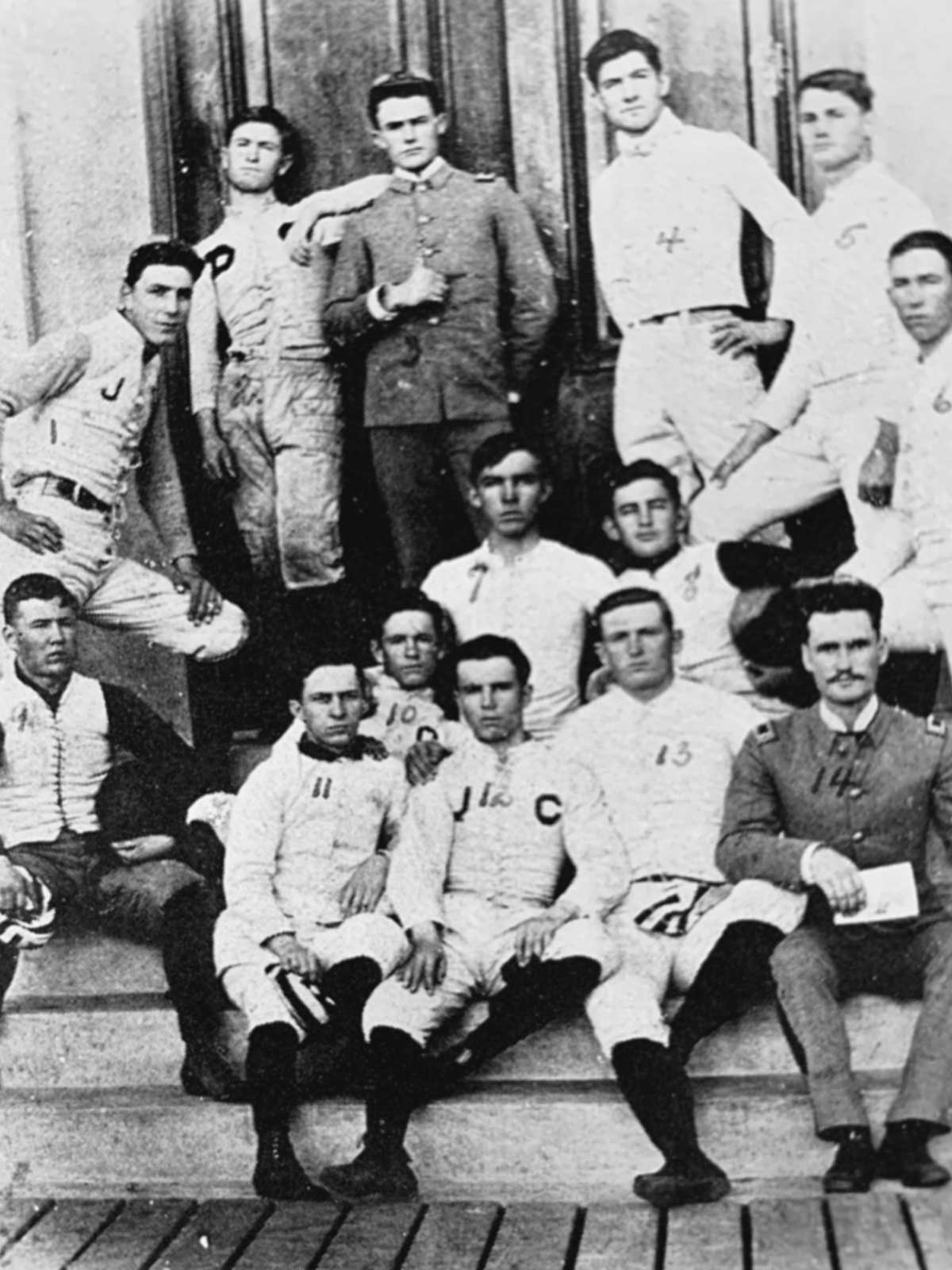
The first A&M football team, organized in the fall of 1894.
Cushing Memorial Library | Courtesy TAMU Press
“It put a spotlight on sports in the state of Texas. That’s what the Dixie Classic did,” Adams says. “There had been some great SMU teams during that time. There had been some good TCU teams. University of Texas had a good team in 1919. But none of them got any attention—no All-Americans, no recognition, no ranking.”
While attention and accolades are, of course, welcomed with open arms, those aren’t what propel Aggie students to show up on game day, 12th Man towels in hand, and stand for their team. Gill, a longtime Corpus Christi physician, possibly said it best. In a 1964 campus speech, without even a whiff of self-aggrandizement, he talked about that day at Fair Park and his role as the original 12th Man: “I’ve never thought that the 12th Man really belonged to a personality. It belongs to the A&M student body,” he said. “And every one of you can be a 12th Man. You stand up—stand up for what’s right and be ready to serve.”
Correction: January 20, 2022
This story was updated to correct the caption with the picture showing Texas A&M University’s Corps of Cadets’ block Aggie T formation. The 1920 photo was taken at a football game against Baylor University at the Cow Palace in Waco, not Kyle Field in College Station. Researchers at Texas A&M’s Cushing Memorial Library & Archives confirmed the location.
